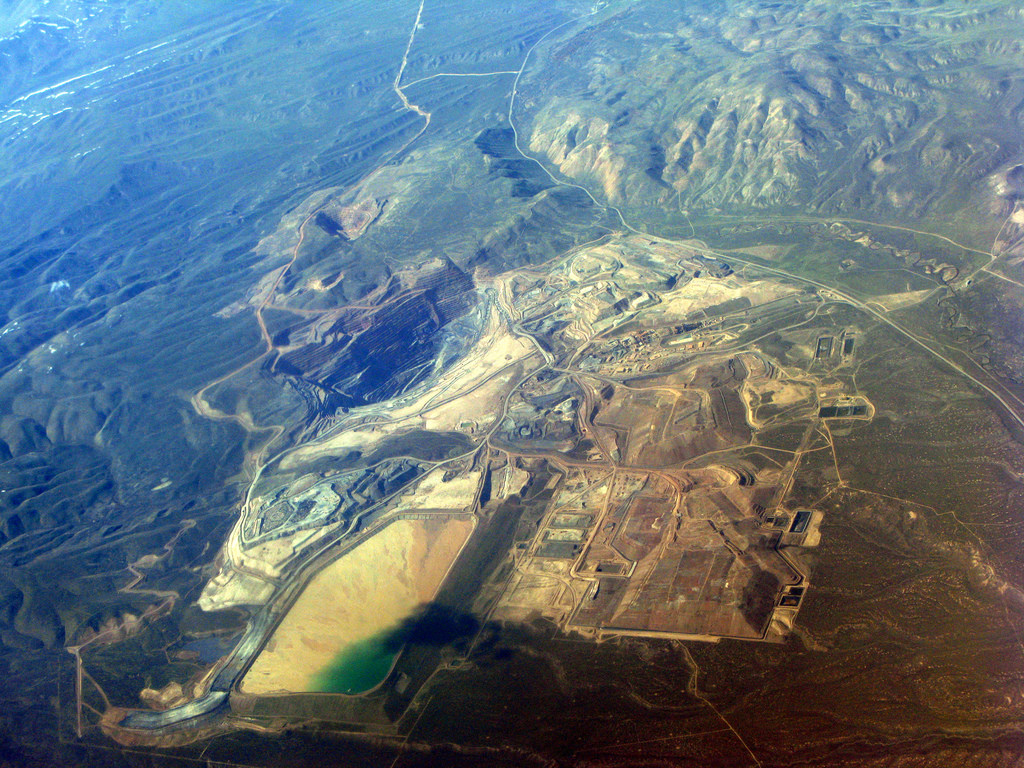Two rural Nevada counties have some of the most export-dependent economies in the U.S., GDP data shows

Visit an alfalfa farm in central Nevada, and you will hear about China and Saudi Arabia.
The two countries are big buyers of Western hay. Last year, a Saudi dairy company picked up land in Arizona and California, the Associated Press reported. The farm grows hay that can then be shipped back to feed cattle in the parched Middle East nation. In recent years, China’s dairy demand has grown, and with it, the country has shown an increasing interest in Western hay.
The world is interconnected, and events on one part of the globe can often have ripple effects on local economies that export crops or minerals. Prices could slip. Prices could spike. This is a reality for several Nevada counties, where dominant industries include mining and agriculture. In fact, two Nevada counties — Eureka and Lander – are among the most export-dependent counties in the U.S., according to an analysis by Pew Research Center.
“It doesn't surprise me that some of these rural areas are highly dependent on exports," said Sheldon Mudd, executive director of the Northeastern Nevada Regional Development Authority.
The Trump administration has pledged to renegotiate free trade agreements, like NAFTA, and pulled the United States out of the Trans-Pacific Partnership, a free trade agreement with Asia. Pew’s analysis suggested that export-dependent counties, which tend to be in rural areas, could be most affected by changes to these agreements. Until the administration comes out with more specifics, Mudd said it will be difficult to tell how revised trade deals might affect rural Nevada.
“Until we see those details, we can guess all day long,” he said.
Still, Mudd emphasized the importance of diversifying rural economies that might be heavily dependent on one or two industries. It is important, he said, to hedge against market trends.
Pew’s analysis relied on data from the Brookings Institution. In its Export Monitor 2017 report, Brookings looked at exports as a percentage of county-level gross domestic product. The Brookings report also quantified exports by industry and how they have changed over time.
To get a better understanding of where these counties stand and the extent to which they are dependent on exports, the Nevada Independent reviewed and analyzed the Brookings data set:
It’s all about mining
According to the Brookings data, about 39 percent of Eureka County’s GDP comes from an export-dependent industry. The central Nevada county, with a population of about 2,000, is one of the state’s least-populated counties. A closer look at the data shows that this is the result of mining and oil extraction in the area. It accounts for 98 percent of export-oriented activity.
Eureka County has several oil fields and metal mines, including gold and barite.
Other rural counties follow a similar trend. In fact, mining, oil and gas extraction as a collective industry account for the majority of export-oriented industrial activity in eight rural Nevada counties (Elko, Eureka, Humboldt, Lander, Mineral, Nye, Pershing and White Pine).
After Eureka County, the Pew analysis identified Lander County as another export-dependent county. About 27 percent of its GDP comes from export dependent industries, namely mining.
Lander County, like Eureka County, has several mines for metal and industrial materials. The industry as a whole accounts for about 92 percent of the county’s export-oriented activity.
In terms of raw dollar value, neither county ranks highest in the state for exports. With Las Vegas and Reno, Clark and Washoe counties export far more than Eureka or Lander in real dollars. But relative to GDP, exports (often from one industry) account for a larger share of the rural economies.
When it comes to mining, Mudd said changes in trade agreements might have less of an impact than normal market fluctuations. Compared to other parts of the U.S., Nevada is different in a few ways, he said. For one, much of what is exported are precious metals that haven’t been processed into a final good. Many of the proposed changes to free trade policies could have a bigger impact on manufactured goods and agriculture. In mining, the worry is more about price changes.
Central Nevada is a major producer of barite, and supply and demand plays a role in setting price. The price of barite, which is used in drilling, also tracks changes in oil and gas prices.
“In this region, people are more concerned about market prices,” Mudd said.
Nevada stands out in another way. When many people think of exports, they think of shipping out widgets or an agricultural product like corn. Metals are often exported for different reasons, Mudd said. In some cases, due to environmental laws, Nevada-mined metal like gold or copper might be exported out of the U.S. to be processed, only to be sent back to the U.S. to be sold.
Rural diversification
It’s important to stress that the data looks only at export-oriented industries. It gives a filtered picture through that lens, and it does not necessarily give a full picture of the local economies.
For instance, agriculture in Eureka County plays a role in balancing the local economy, even if mining accounts for more exports. In a presentation to the Legislature last year, a county official described it as the “social glue” that holds the region together through mining's booms and busts.
But economic diversification is still crucial.
Mudd, who previously worked for the Governor’s Office of Economic Development, said that while urban areas have been able to diversify their economies, rural areas still have work to do.
“Things that work in urban areas don’t always work in rural areas,” he said.
Thomas Harris, director of University of Nevada’s Center for Economic Development, stressed that it was important to bring infrastructure upgrades, like high-speed internet, to these areas.
“Most of our new economy is based on that,” he said.
